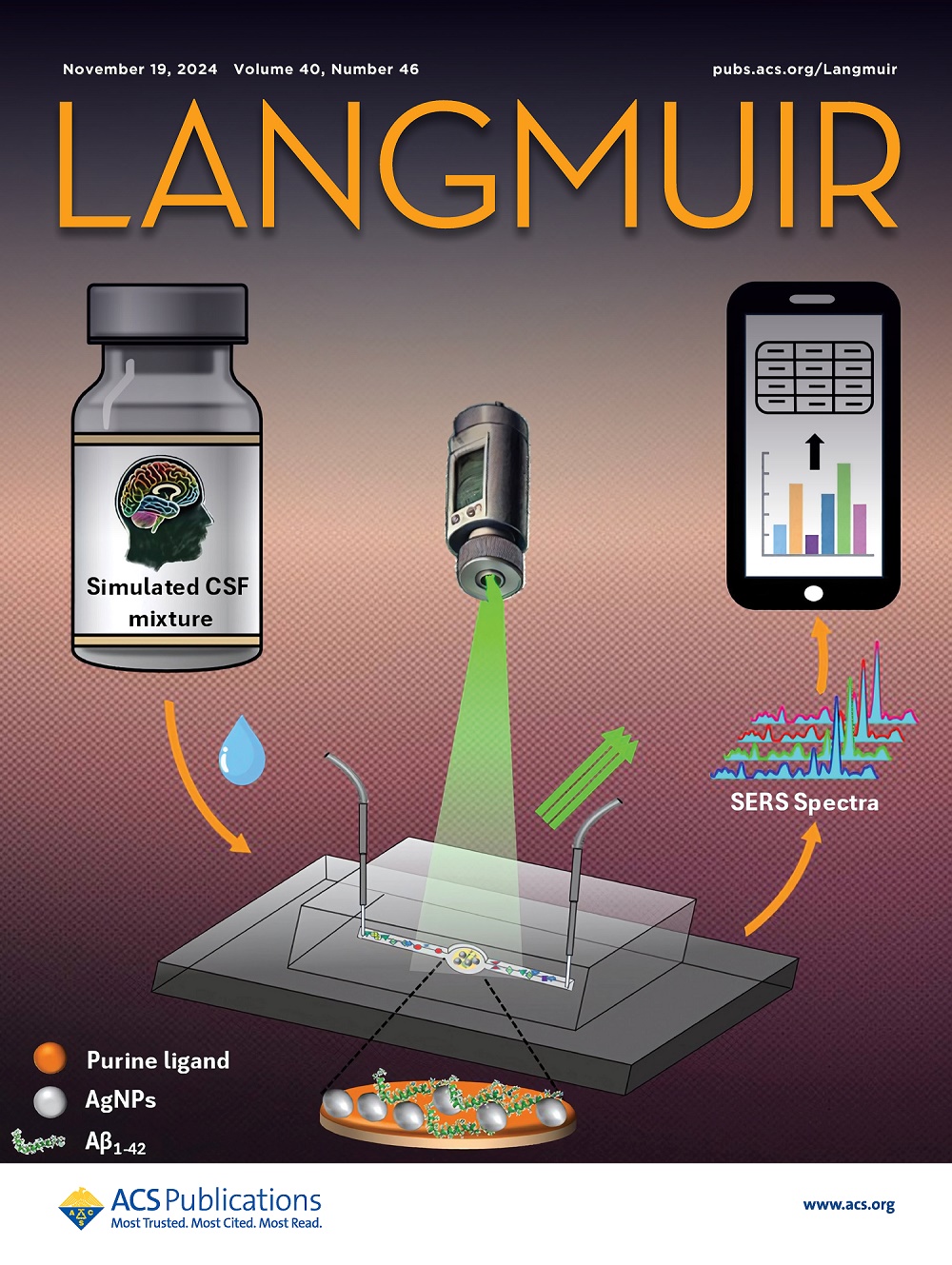Thermoresponsive Film Enhances Fluid Migration within the Capillary under a Dynamic Wettability Gradient
IF 3.7
2区 化学
Q2 CHEMISTRY, MULTIDISCIPLINARY
引用次数: 0
Abstract
The study developed a thermoresponsive film to achieve autonomous fluid driving in microfluidic channels, simplify microfluidic systems, and improve their operability. This film has a lower critical solution temperature (LCST), exhibiting different wettabilities on each side of the LCST, and showed improved hydrophilicity-to-hydrophobicity conversion with increased substrate roughness, maintaining stability after repeated cycles. The thermoresponsive film was applied to the inner wall of the glass capillary, which showed a hydrophilic and enhanced capillary effect below the LCST and a hydrophobic and weakened capillary effect above the LCST. Subsequently, the modified capillary was placed under a dynamic temperature gradient, and the force analysis of the fluid in the flow channel was carried out. It was found that only when the driving force exceeded the axial resistance could the fluid migrate. Experimental analysis showed that fluid length was directly proportional to axial resistance and inversely proportional to both driving force and migration velocity at a constant dynamic temperature gradient. Additionally, the temperature of the hot end of the capillary was varied to form different dynamic temperature gradients. A higher dynamic temperature gradient resulted in greater fluid displacement and velocity at a constant fluid length. The results presented in this study were expected to provide new insights into the design and optimization of thermally driven microfluidic systems.

热响应膜在动态润湿性梯度下增强毛细管内的流体迁移
该研究开发了一种热响应膜,以实现微流控通道的自动流体驱动,简化微流控系统,提高其可操作性。该膜具有较低的临界溶液温度(LCST),在LCST两侧表现出不同的润湿性,并且随着衬底粗糙度的增加,亲疏水转化得到改善,在重复循环后保持稳定性。将热响应膜涂在玻璃毛细管内壁上,结果表明,玻璃毛细管表面以下的毛细效应为亲水性增强,表面以上的毛细效应为疏水性减弱。随后,将改进后的毛细管置于动态温度梯度下,对流道内流体进行受力分析。研究发现,只有当驱动力大于轴向阻力时,流体才会发生迁移。实验分析表明,在恒定的动态温度梯度下,流体长度与轴向阻力成正比,与驱动力和迁移速度成反比。此外,毛细管热端温度的变化会形成不同的动态温度梯度。在流体长度不变的情况下,较高的动态温度梯度导致较大的流体位移和速度。本研究结果有望为热驱动微流体系统的设计和优化提供新的见解。
本文章由计算机程序翻译,如有差异,请以英文原文为准。
求助全文
约1分钟内获得全文
求助全文
来源期刊

Langmuir
化学-材料科学:综合
CiteScore
6.50
自引率
10.30%
发文量
1464
审稿时长
2.1 months
期刊介绍:
Langmuir is an interdisciplinary journal publishing articles in the following subject categories:
Colloids: surfactants and self-assembly, dispersions, emulsions, foams
Interfaces: adsorption, reactions, films, forces
Biological Interfaces: biocolloids, biomolecular and biomimetic materials
Materials: nano- and mesostructured materials, polymers, gels, liquid crystals
Electrochemistry: interfacial charge transfer, charge transport, electrocatalysis, electrokinetic phenomena, bioelectrochemistry
Devices and Applications: sensors, fluidics, patterning, catalysis, photonic crystals
However, when high-impact, original work is submitted that does not fit within the above categories, decisions to accept or decline such papers will be based on one criteria: What Would Irving Do?
Langmuir ranks #2 in citations out of 136 journals in the category of Physical Chemistry with 113,157 total citations. The journal received an Impact Factor of 4.384*.
This journal is also indexed in the categories of Materials Science (ranked #1) and Multidisciplinary Chemistry (ranked #5).
 求助内容:
求助内容: 应助结果提醒方式:
应助结果提醒方式:


